The raspberry tree is characterized by strong immunity, increased productivity and ease of harvesting ripe fruits. To get such a berry tree or compact bush, you need to choose the variety of standard raspberries most suitable for your region, carry out proper planting and regular care.
|
The raspberry tree is a standard raspberry with strong shoots that can be shaped into a tree. |
| Content:
|
The culture will reward persistent gardeners with strong fruiting shoots, sweet and aromatic berries, and a long fruiting period. The optimal height of the bush and the absence of thorns on the shoots make harvesting easy and comfortable.
Description of raspberry tree varieties
We bring to your attention photographs and characteristics of standard raspberries; we hope that a detailed description of the varieties will help you choose the most suitable plant for your garden.
Tarusa
|
This raspberry variety is distinguished by its high survival rate, ease of care, and immunity to most pests and diseases. |
The most popular variety of raspberry tree among gardeners, which was obtained as a result of lengthy breeding work. Two varieties were taken as a basis - Stolichnaya and Stambovy - 1. It is recommended for cultivation in regions with a dry climate, as it does not tolerate high humidity. The fruits are most often used in cooking and canning, but when eaten fresh they are most useful.
- Active ripening of raspberries begins approximately after the tenth - fifteenth of July.
- From one mature bush you can harvest about four kilograms of raspberries.
- The average weight of one large elongated berry is from ten to sixteen grams. The pulp is very tender and sweet, high juiciness.
- The average height of the bush is one and a half meters.The shoots are covered with a light waxy coating, there are no thorns.
- For the planting site, you should choose open sunny areas, without drafts and with deep groundwater. The interval between seedlings and the nearest buildings is at least one meter.
- Raspberries tolerate cold winters well with frosts down to thirty degrees, but only if there is snow cover. Without snow, the bushes freeze even at minus twenty-five degrees.
Review from Pavel R. “Last year I was looking forward to the first harvest of Tarusa from my bushes, but underestimated the impact of the cold and rainy summer. As a result, although the berries grew large, they turned out watery - they simply did not have enough sun or heat. And only the last berries, which finally received everything they needed in September (the first autumn month put almost the entire summer season behind them), came out sweet.”
Benefit
|
One of the best varieties, extremely rarely affected by pests and diseases. |
A mid-late variety of standard raspberries of Polish origin, it is characterized by high yield and winter hardiness. Does not tolerate drought. The berries are consumed fresh, frozen, or canned. The crop is suitable for commercial cultivation.
- With proper care, the variety consistently produces high yields. Loves drip irrigation and mulch, timely pruning and proper fertilizing.
- The berries are slightly elongated, cone-shaped, dark red in color, with barely noticeable pubescence. The taste is sweet, with a slight sourness. Average weight is from eight to fifteen grams.
- The tall bush (about two meters) consists of strong and stable shoots (without thorns), large, highly wrinkled leaf plates and multi-berry clusters.
- A favorable growing location is an area with fertile, loose soil. The distance between the rows of raspberries is one and a half to two meters, between the bushes - at least seventy centimeters.
- High viability and strong immunity allow this raspberry to withstand frosts of more than twenty-five degrees without additional shelter.
Penguin
|
A productive miniature variety of standard raspberries can become a real decoration of a garden plot, as it has a beautiful appearance and is highly decorative. |
Its attractiveness and unpretentiousness, high yield and disease resistance are highly valued by gardeners. Plants do not require garter or support. Their shoots are strong, they can withstand not only abundant harvests, but also sudden gusts of wind.
- The mid-early raspberry variety begins to bear fruit in July in the southern regions and in early August in temperate and cooler climates, and ends in mid-October.
- A short, and sometimes even dwarf, bush (from one hundred and ten centimeters to one and a half meters) produces about five kilograms of berries per season.
- The average fruit weight is about seven grams. The pulp is dense, dark red, sweet and sour in taste. If harvesting is delayed, then ripe berries retain their quality for five to seven days, do not crumble and do not bake in the sun. They withstand transportation perfectly.
- For full development, the variety requires a sunny area on a small hill, without gusts of north wind, with nutritious soil of neutral acidity. When planting in rows, the row spacing is about a meter, between seedlings - about eighty centimeters.
- The frost resistance of the variety is low; shelter is required.
Review from Irina K. “The Penguin variety is for the busy and lazy, it does not require support or garter. The berry does not burn in the sun, but at extreme positive temperatures it roasts on the bushes. In the southern climate, without watering, you can’t count on a harvest. The variety is not painful. Transportability is 4. The taste is sickly sweet, the big minus is the lack of a raspberry note. In autumn, the taste improves due to the appearance of a slight sourness.”
Octavia
|
A new high-yielding variety of raspberry tree of English origin is recommended for regions with southern and temperate climates. |
It is resistant to various diseases and highly resistant to frost. Reacts negatively to acidic soil, lack of sunlight and excess moisture. Loves organic fertilizers. Tolerates dry periods well.
- The fruiting period begins in mid-summer and lasts about six weeks.
- The average yield is three and a half or four kilograms of raspberries per bush.
- A neat massive bush consists of strong shoots without thorns, large light green leaves and dark pink or red cone-shaped fruits. The average height is about two meters.
- The berries are very sweet, weigh about eight grams, have slight pubescence, and the flesh is dense in structure. It handles loading and transportation very well.
- For planting, you need to choose areas near a fence or building at a distance of about one meter. Raspberries should be in the sun for half of the day, and in partial shade for the second half.
- In temperate climates, plants do not need shelter. The variety can withstand even thirty-degree frosts.
Bogatyr
|
One of the best varieties of standard raspberries is suitable for growing in the south, in the Moscow region, in Siberia and the Urals. |
It is distinguished by its exquisite berry taste, fast growth, minimal cultivation requirements and high yields. The raspberry tree consists of many upright shoots with a smooth surface, without thorns. The amount of harvest does not depend on weather conditions. Transportability is high.
- Mid-early variety. Raspberries will ripen at the end of June - beginning of July.
- Depending on the local climate, the weight of one berry can be from eight to twenty grams. Each bush brings on average from five to twelve kilograms.
- The fruits are large and juicy, with a sweet and sour taste.
- The average height of an adult crop is one and a half meters.
- Raspberries are planted in open fertile areas, with moderately moist and neutral soil. Planting is done in rows in trenches or in separate holes at intervals of about one hundred centimeters. Row spacing is up to two meters.
- The winter hardiness of the variety is very high, but in regions with severe frosts and snowless winters it is recommended to cover the bushes with agrofibre.
Ispolin
|
An unpretentious and easy-to-care variety of raspberries is distinguished by very aromatic and tasty fruits, a compact bush shape, absence of thorns, and long-term fruiting. |
Hardy plants do well in temperate climates. They can adapt to any weather conditions. Siberia, the Southern Urals and the North-Western regions may also be suitable habitats for the Giant.
- A mid-season variety, raspberries ripen around the tenth of July and please with their harvest until the end of summer.
- The harvest is harvested in several stages, on average about six kilograms per bush.
- The juicy and soft berry has a sweet and sour taste and a subtle raspberry aroma. The weight of one fruit is from eight to twelve grams.
- Each raspberry bush reaches a height of about one and a half meters or a little more. The thick, erect shoots have no thorns, and the surface is covered with a light waxy coating.
- To obtain a generous harvest, it is recommended to plant raspberries in an open sunny area or on the south side of the building. The distance between bushes is fifty centimeters, between rows – up to two meters.
- Plants do not need shelter up to thirty degrees below zero.
Atlant
|
Still very young, but already a favorite among gardeners, the hybrid variety officially appeared in the regions of Russia only in 2015. |
Raspberries are great for southern and temperate climates. It resists pests and various diseases and easily tolerates dry periods. A consistently generous and high-quality harvest can be transported and used not only fresh, but also for freezing and canning.
- The first fruits appear in early August and delight with their quantity and quality until the beginning of October.
- Each raspberry bush produces about three kilograms of berries per season. They can stay on the branches for a long time, remaining fragrant, juicy and sweet. They do not crumble or rot.
- The average weight of a berry is about nine grams. The height of the plant is no more than one hundred and sixty centimeters. The minimum number of thorns at the bottom of the shoots.
- Crops do not tolerate excess moisture. The berries become too juicy and soften. They are difficult to collect and impossible to transport.
- Seedlings should be kept two meters apart from each other and from a nearby fence or building.
- Overwinters only under cover.
Review from Svetlana K. “I’ve been dreaming of purchasing the Atlant variety for 5 years, and for three years I couldn’t be happier. The berry is very tasty, the shoots are erect, practically do not require garter, it is a very productive and rewarding variety, but if there is no watering, the raspberries immediately become smaller.”
Fairy tale (Skazka)
|
An unpretentious and consistently productive variety. |
Reacts negatively to sudden temperature fluctuations and sudden weather changes. Loves frequent fertilizing and loose soil. Needs regular adjustment of shape and seasonal pruning. The harvest is easy to transport, the fruits retain their external characteristics and taste. Berries have proven themselves well in preserves and jams.
- The variety is average in terms of ripening. You can enjoy raspberries in July – August, and in the southern regions in September.
- One bush produces from five to eight kilograms of berries per season. The harvest does not fall off the branches for a long time.
- The fruits are cone-shaped. They have a pleasant aroma and excellent taste. They contain a high sugar content. The average weight of one berry is up to fifteen grams.
- Each raspberry tree reaches a height of one and a half to two meters. It consists of several powerful spreading main and side shoots, bright green carved leaves. There are no thorns.
- Raspberries grow best at low elevations. The place should be open, but protected from the wind; the soil is nutritious and breathable.
- The distance between the bushes is one meter, between the rows - about two meters.
- Average winter hardiness allows you to withstand frosts of about twenty-three degrees.
Krepish
|
The Krepysh variety is characterized by strong immunity and high resistance to diseases and pests. |
But the crop tolerates mechanical damage with difficulty.Strong and strong shoots do not require supports, and the absence of thorns makes harvesting easier. Fragrant and tasty berries are used for desserts, jams, freezing, drying and baking.
- Raspberry ripening dates are June and July. The last berry picking takes place in early August.
- With consistently high yields, one bush produces up to four to four and a half kilograms of fruit.
- Two-meter-high raspberry trees cope well with gusts of wind and produce a bountiful harvest on thornless branches. Bright red fruits of approximately the same size, sweet and sour taste, with dense pulp.
- This raspberry variety loves flat, fertile areas. Planting can be done in rows or in a checkerboard pattern. The optimal interval between bushes is from fifty centimeters to one meter.
- The frost-resistant variety tolerates frosts of up to twenty to twenty-three degrees without shelter. At lower temperatures and snowless winters, the bushes must be covered.
Galaxy
|
The large-fruited thornless variety of raspberries can be grown in the south, north, and central zone. It is ideal for Moscow and the Moscow region. |
Lack and excess of moisture during care negatively affects the size and taste of the fruit. Due to their high juiciness, the berries do not tolerate transportation well and are not suitable for growing for commercial purposes.
- The fruiting period begins in the second decade of July and lasts about four to five weeks.
- Each raspberry tree produces four to five kilograms of fruit.
- The weight of one large and juicy berry is approximately ten to fifteen grams. The dark red fruits have a slightly elongated shape and a glossy shine.They have a pleasant taste and bright aroma. The bones are very small.
- The average height is about one hundred and seventy centimeters.
- It is recommended to plant seedlings using the bush method with an interval of one and a half meters and a row spacing of at least two and a half meters.
- In regions with harsh winters, where the thermometer drops to minus thirty degrees, plants will need reliable shelter from spruce branches, hay, fallen leaves or agrofibre.
Arbat
|
An ornamental berry variety with large medicinal fruits and corrugated leaf blades is characterized by high and stable yields, strong immunity, good shelf life and transportability. The use of the fruit is universal. |
- Depending on the growing region, the fruiting period begins in late June or early July and lasts until mid-August.
- With minimal care, each raspberry bush produces five kilograms of delicious berries.
- Each fruit is slightly elongated, about four centimeters long and weighs from five to fifteen grams. Small seeds are almost invisible against a bright red background. The pulp is very aromatic and completely without sourness.
- A spreading bush similar to a tree, consisting of strong shoots without thorns, average height is about two meters.
- When planting, you should maintain an interval of one and a half meters between crops and two and a half meters between rows.
- Without shelter, raspberries survive even in frosts of thirty degrees. In more severe regions, plants are insulated with organic and special materials.
Review from Victor N. “Raspberry Arbat really grows without thorns, which quite surprises my guests. And of course, everyone is amazed by the size of the berries.”
Review from Sergey K. “I’ve been growing raspberries on my plot for decades, I’ve grown various varieties, and recently I’ve been cultivating Arbat raspberries. This variety fully corresponds to the description of specialists - large-fruited and high-yielding, not susceptible to diseases, not affected by pests. My wife makes jam from the harvest, and I make raspberry liqueur.”
Do not miss:
Eurasia
|
The universal large-fruited variety is distinguished by its ability to take root in any climatic conditions, on any soil. |
A friendly harvest is always stable and of high quality. Crops can withstand intense heat, but with difficulty, but dry periods do not affect yields. The variety is especially in demand in the Siberian regions.
- Raspberries begin to bear fruit in the second half of July and end in September.
- Productivity is about three and a half kilograms per plant.
- The weight of the berries is from three and a half to six and a half grams. The dark raspberry fruits have virtually no aroma and are sweet and sour in taste.
- The standard upright bush reaches a height of one hundred and fifty to one hundred and seventy centimeters. The shoots have thorns at the very base.
- The area for the raspberry garden should be open, well lit, with deep groundwater. It is possible to plant seedlings at a distance of one meter from a hedge or fence. The interval between bushes is about one meter, the row spacing is one and a half meters.
- For the winter, the shoots are tied, bent to the ground and covered with spruce branches, fallen leaves, reeds and other natural materials. It can withstand frosts down to minus thirty.
Review from Victor R. “Several years ago I planted a small plantation of remontant raspberries on my plot.It’s still too early to draw definite conclusions, but the fastest ripening of all my varieties is so far Eurasia. The taste is quite good, now is the second half of September - fruiting is coming to an end. I like that it has a lot of berries and the bushes don’t require any care at all.”
Don't forget to read:
Agricultural technology for growing standard raspberries
To get a good harvest, it is important to follow all the rules for growing a raspberry tree and take into account some of the characteristics of the crop.
- Planting dates: spring or autumn.
- The optimal planting site is an elevated area, full lighting, remoteness from groundwater and tall plants, and taking into account predecessors.
- The soil should be nutritious, loose, not acidic. You can add humus and peat before planting.
- It is important to maintain the spacing between seedlings and between rows.
- Caring for raspberries consists of constant weeding, timely pruning, proper watering, fertilizing and mulching the area. Much attention is paid to crown formation.
You might be interested:
- Description of the 20 best varieties of blackberries with photos and reviews ⇒
- The best varieties of black raspberries with descriptions and reviews ⇒
- Description of the best remontant raspberry varieties with photos and reviews ⇒
- Cold-resistant raspberry varieties for the Moscow region with photos and reviews ⇒
- Raspberry Tarusa tree: description of the variety, photos and reviews from gardeners ⇒
- Raspberry tree Fairy Tale: description, photo, rules of planting and care ⇒
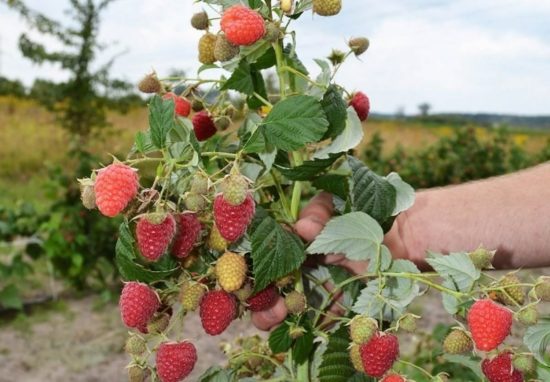
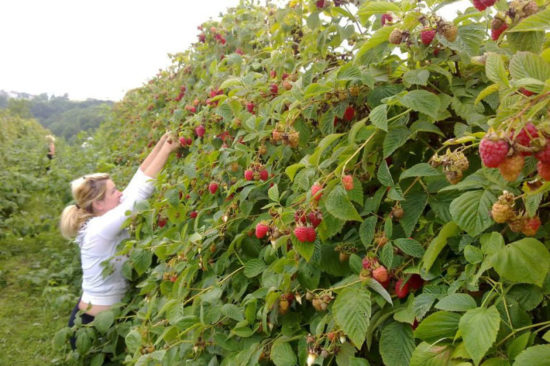
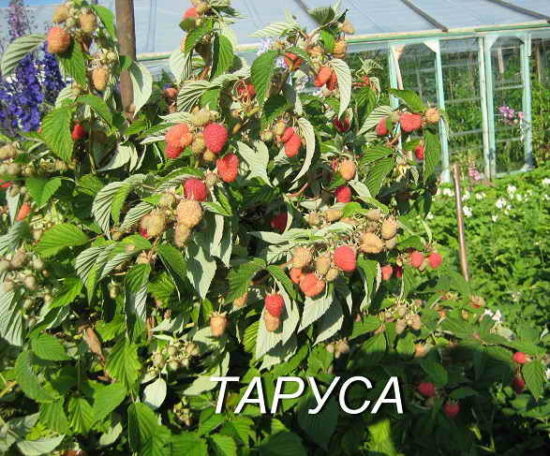
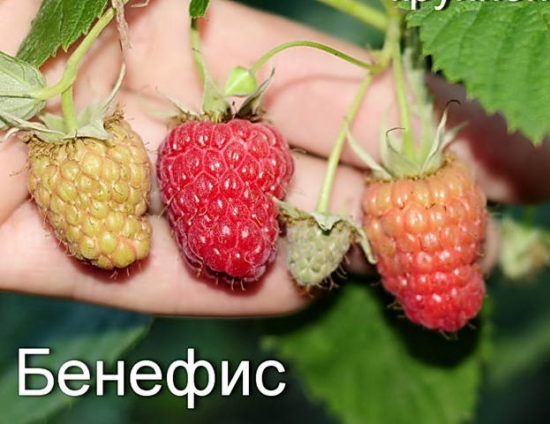
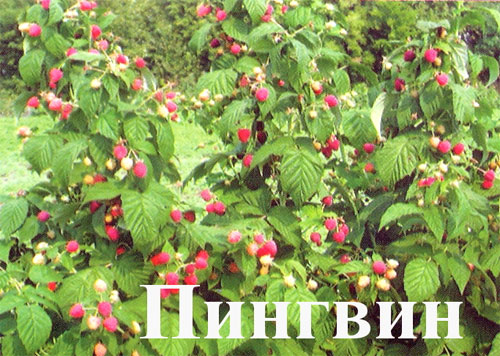
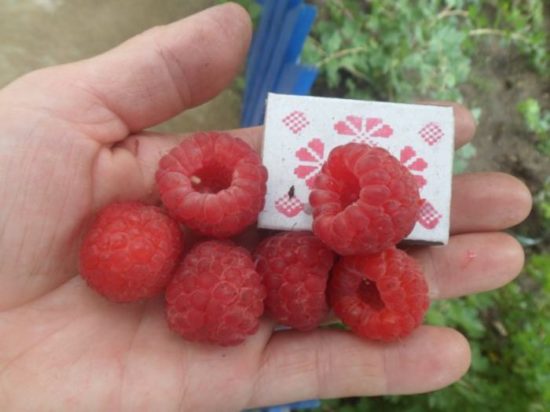
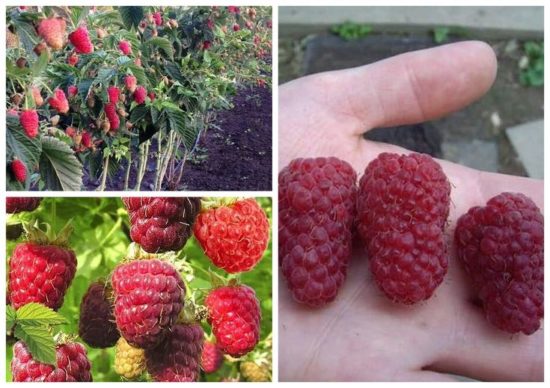
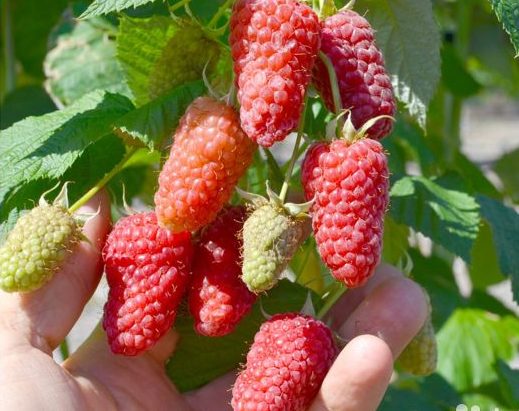
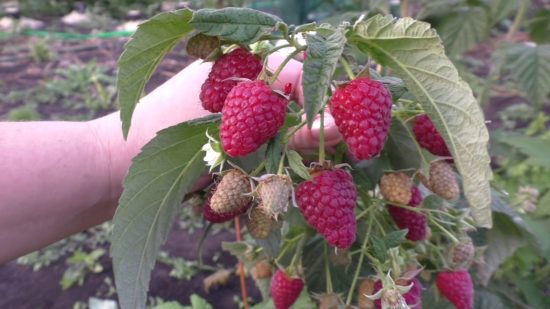
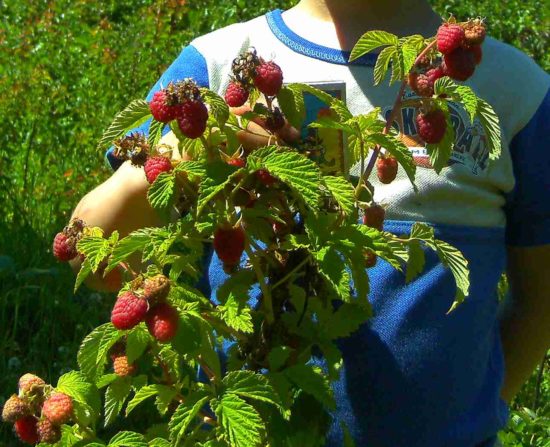
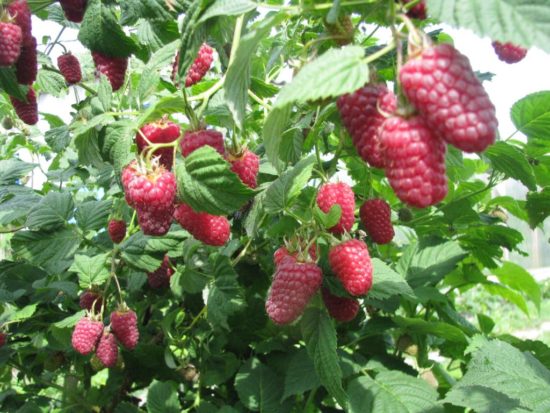
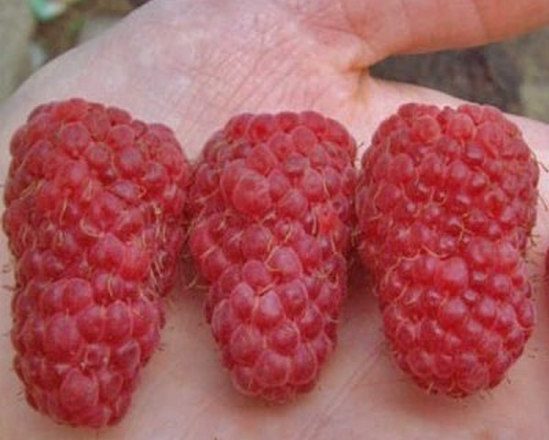
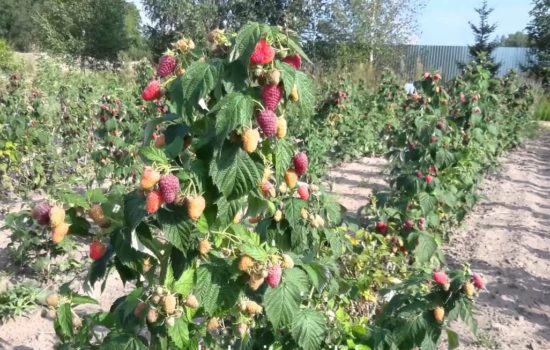

 (3 ratings, average: 4,67 out of 5)
(3 ratings, average: 4,67 out of 5) CUCUMBERS NEVER GET SICK, I'VE BEEN USING ONLY THIS FOR 40 YEARS! I SHARE A SECRET WITH YOU, CUCUMBERS ARE LIKE THE PICTURE!
CUCUMBERS NEVER GET SICK, I'VE BEEN USING ONLY THIS FOR 40 YEARS! I SHARE A SECRET WITH YOU, CUCUMBERS ARE LIKE THE PICTURE! You can dig a bucket of potatoes from each bush. Do you think these are fairy tales? Watch the video
You can dig a bucket of potatoes from each bush. Do you think these are fairy tales? Watch the video
 How our fellow gardeners work in Korea. There is a lot to learn and just fun to watch.
How our fellow gardeners work in Korea. There is a lot to learn and just fun to watch. Eye trainer. The author claims that with daily viewing, vision is restored. They don't charge money for views.
Eye trainer. The author claims that with daily viewing, vision is restored. They don't charge money for views. A 3-ingredient cake recipe in 30 minutes is better than Napoleon. Simple and very tasty.
A 3-ingredient cake recipe in 30 minutes is better than Napoleon. Simple and very tasty. Therapeutic exercises for cervical osteochondrosis. A complete set of exercises.
Therapeutic exercises for cervical osteochondrosis. A complete set of exercises. Which indoor plants match your zodiac sign?
Which indoor plants match your zodiac sign? What about them? Excursion to German dachas.
What about them? Excursion to German dachas.